


Built during the 16th century when the old chapel of San Lorenzu in the valley could no longer accommodate the increasing local population. In the form of a basilica, it has three masonry naves which are vaulted.


Built by the Bertola family during the 19th century, this church-like hall once housed the marshalcy stables. It now houses an exhibition of photographs of all the families of the village, with local personalities and traditional scenes from yesteryear.

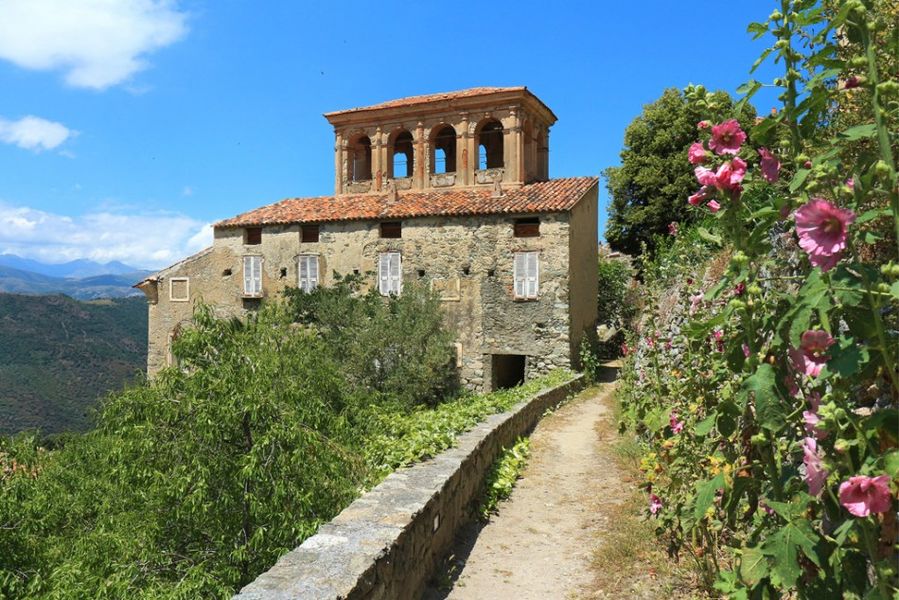
Built from 1625 by the priest Giacomantonio Bartoli, the house was extended in 1660 by his nephew, the priest Antonbattista Bartoli, then extended further during the centuries that followed.The house was built from 1625 by the priest Giacomantonio Bartoli. Around 1850 it was decorated with a belvedere and ceiling paintings by the Livornese painter Luigi Tuticci in the reception rooms, representing in particular the four great Italian poets of the Renaissance (Dante, Petrarch, Tasso and Ariosto). These ornaments are characteristic of some rural notables' houses in the mid-19th century.


The cheese cellars are a succession of three vaulted cellars found deep within natural caves, along with a series of clearwater pools which make them feel like a kind of nymph sanctuary.

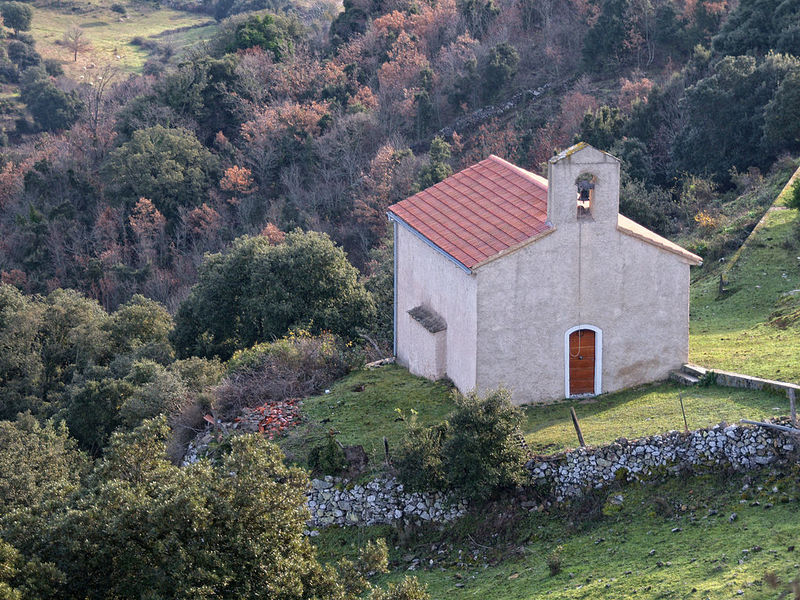
A Nunziata is a small chapel dating from the 15th century and since restored. It is located below the hamlet of Pedano.


The chapel is built of small stone blocks with larger stones at the corners. Inside rest the remains of Sainte Lucie and Sainte Apolline, as well as some souvenirs of the hamlet's inhabitants, which only add to the charm of this site.It was restored in the early 1970s. The little chapel, all plastered, stands on a small plateau overlooking the valley of the Ostriconi. Its dimensions, 7.98 m by 4.14 m, make it look more like an oratory than a chapel. In 1646, Monsignor Marliani referred to it as the "oratoria della Annunziata". It has been recently modified: tiled roof (including the apse) and plaster on all the walls, which makes dating difficult. However, some elements give it a Romanesque character: the semicircular apse facing east, a loophole in the centre of the apse. The roof of the apse was slightly raised during the remodelling, as the original layout with a teghie border can still be seen. The apse is built on a base that bridges the slope of the ground.
Inside, the line of the triumphal arch can be seen under the blue paintwork, which opens onto a vaulted ceiling. A small side chapel was built on the north side. You can see the recess in the outer wall, which still has a teghie covering.
A pretty font is decorated with an angel's head (outside) and a fleur-de-lis (inside). This building is touching because of the freshness of the colours of the interior (white and blue) and the care that the hamlet has taken with it. A commemorative plaque tells us that a new bell was donated in August 1953 by Mr Filippi.
Mrs Moracchini-Mazel mentions that, according to oral tradition, this chapel is of Romanesque origin, even if today there is no evidence to confirm this hypothesis. However, it should be noted that the chapel of Saint Lucy is in the visual axis of the small chapel of Saint Michael of Pedano. Several dates appear: 1606 on a building in front of the chapel, 1614 on the font. We can deduce that the chapel existed at that time. The beauty of the landscape and the nostalgia emanating from the ruins of the few houses that make up the hamlet are worth a visit.
A small bell tower topped by a cross houses a bell. The present dimensions (6m x 3.65m) are probably the same as those of the previous chapel, as they correspond to the surface area that can be built on a very uneven terrain. In front of the door are various cut stones used in the life of the hamlet: millstone, cut stones to collect the juice from the press. The chapel is the only building to have been rebuilt, the houses of the hamlet being all in ruins.


The 15th-century San Roccu church features three naves and six side chapels. It is home to a statue of San Roccu which is carried in procession and hailed by gunfire on 16 August, the day of the patron saint.

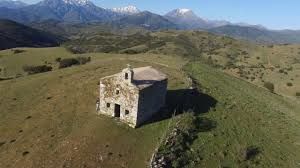
The ruins of the San Michel sanctuary date from the 12th century. The chapel is a tiny building which now stands in ruins on top of a mound just west of Pedano. Mass is held there every 29 September. From Pedano, it can be reached in 10 minutes via a footpath.

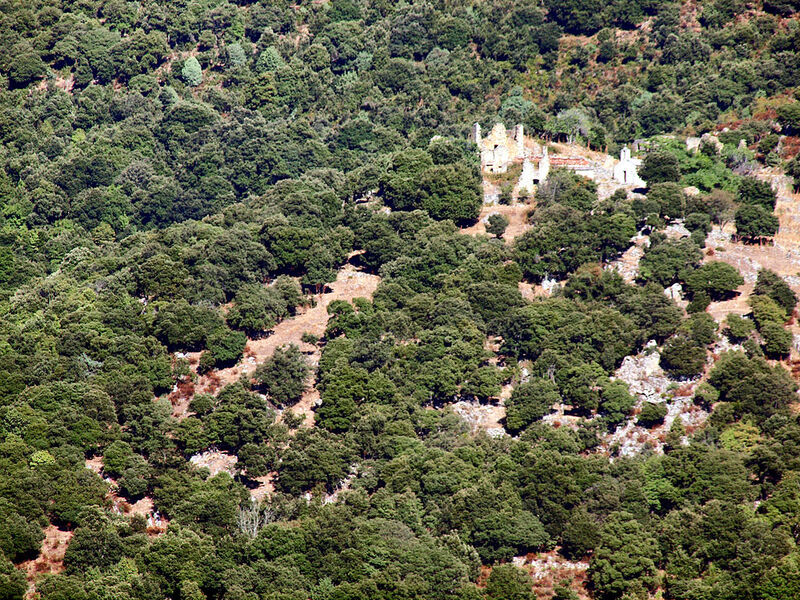
Casenove is a small hamlet above Pietralba that was abandoned at the beginning of the century. The presence of earthenware suggests the existence of a necropolis near the chapel of Sainte Lucie, which was renovated thirty years ago.The building has its remains: a golden calvary donated in 1870 by a hotelier from Versailles, originally from Pietralba, which had escaped the fury of the Prussians. On this ground was born Abbot Bonavita (1752-1833), the first chaplain of the Emperor in St. Helena from 1819 to 1821, a knight of the Papal Golden Order whose tomb is in Mauritius.

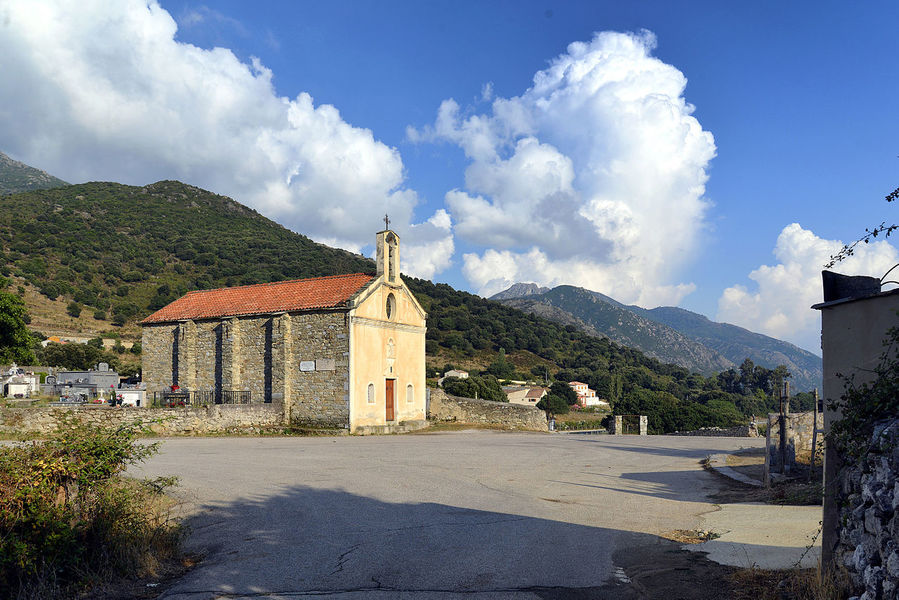
The old parish of Assunta is celebrated on 15 August. It seems the church was built during the reconquest of the Moors in the 10th century, using stone that came partly from an older sanctuary. Some of the stones are pre-Romanesque and sculpted in green schist.

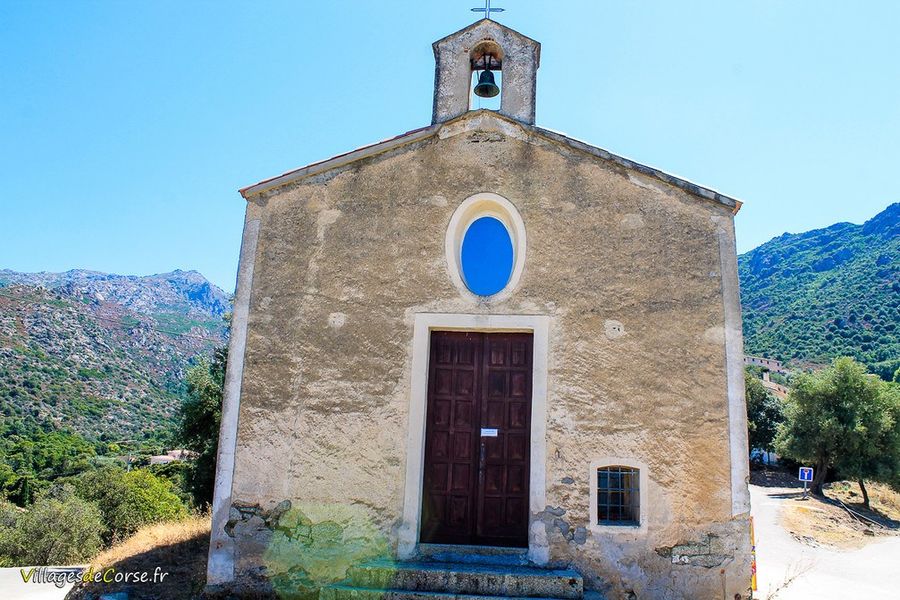
Located at the edge of the village, the chapel is dedicated to Saint Nicholas, the patron saint of sailors and fishermen, but also of children. It features a statue of Saint Nicholas which was purchased in 1857 in Bari (Italy). Saint Nicholas is highly venerated in Corsica.


In the heart of the old district of "U Tricello", this church was built in 1640. Twice a year, in early August and on 6 December, the statue of Saint Nicholas, the patron saint of the village, is carried here in procession from the chapel on the edge of the village.

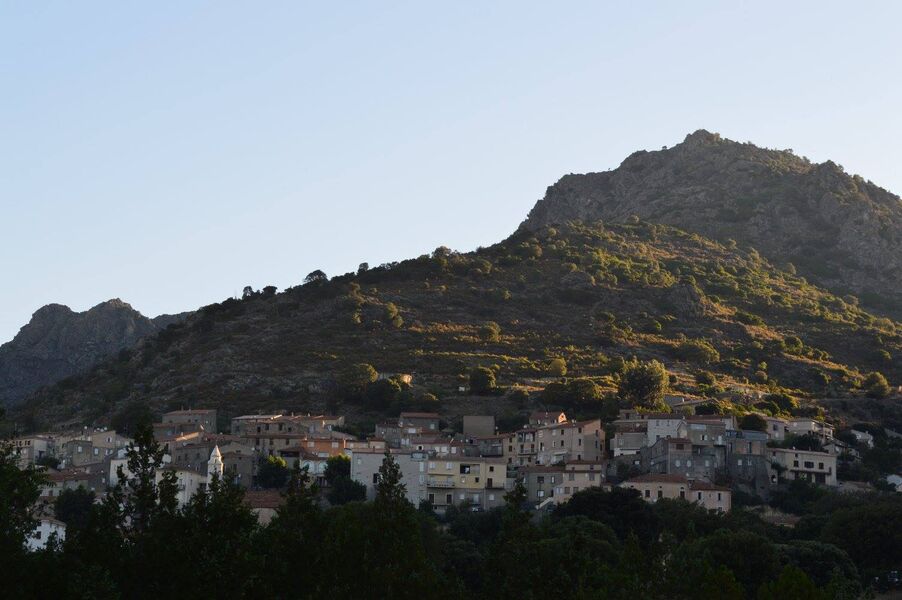
Located at the gateway to Balagne, in the parish of Le Canale, Pietralba is the first village to welcome you to Balagne. Pietralba comprises the hamlets of Le Teto and Pedano, and overlooks the Ostriconi valley and beach.

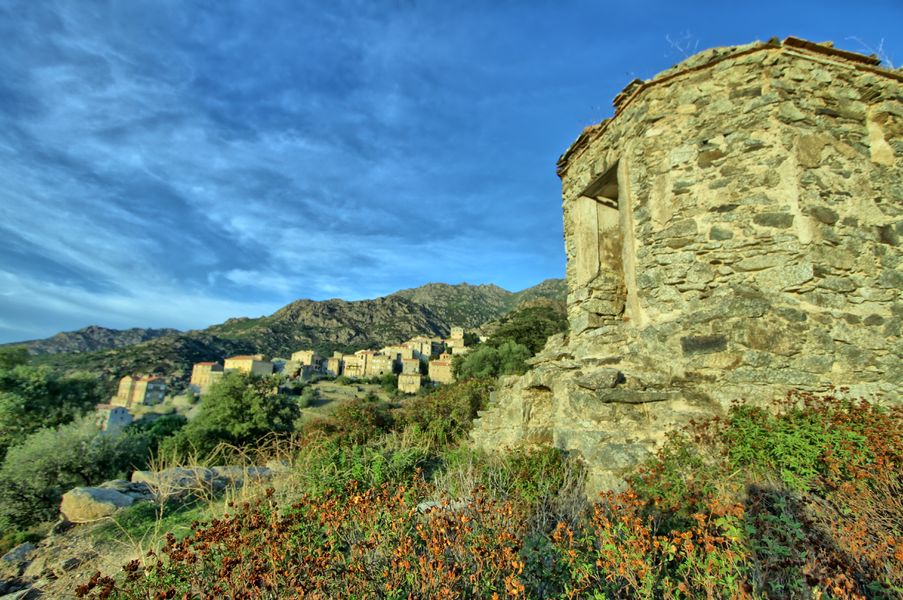
Climb to the top of the rocky peak and succumb to the magical charm of Lama. Follow the narrow stone alleyways and arched passages to explore the heart of the ancient village and admire the houses built against the rock.


Urtaca is truly a balcony village that still oozes the elegance of its past. The houses of the "sgio", the prominent landowners, feature an architectural style of Italian influence.





